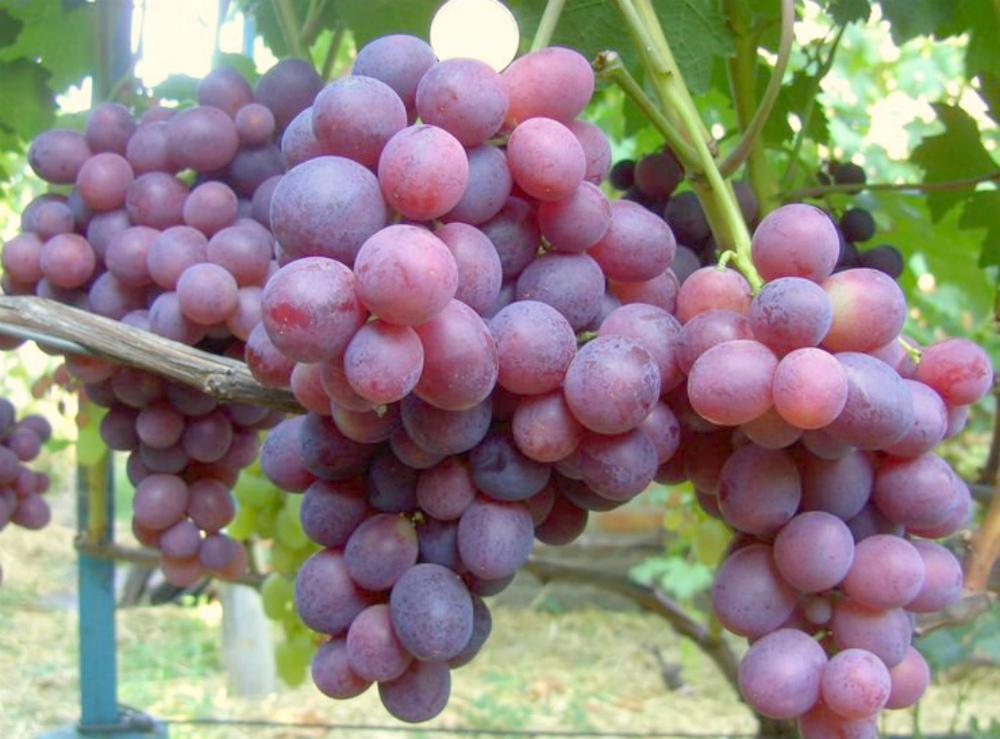
This hybrid form of grapes is gaining popularity among wine growers from different regions of the Russian Federation. In the Dawn of Nesveta, they are attracted by the characteristics of berries, productivity, multi-purpose use of crops. In the market, the berries diverge well. They attract customers with their presentation, a beautiful bunch.
Content
About selection
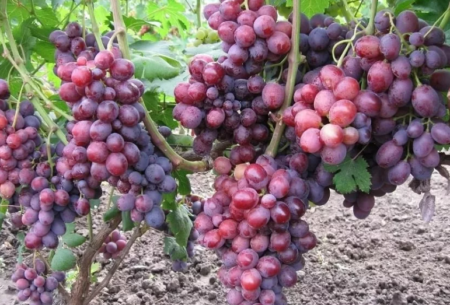
Hybrid forms obtained by amateur breeder Evgeni Georgievich Pavlovsky are successfully grown in Belarus, Russia, and Ukraine. During hybridization, the emphasis was on precocity, resistance to diseases, frost resistance, productivity. All these requirements are met by the Dawn of Light.
The hybrid is obtained by crossing two parent forms:
- Cardinal;
- Mascot.
Both grape varieties widely known among growers. The form of the Dawn of the Light is heat-loving, therefore, it has found greater application in the southern regions. It is successfully grown along the entire Black Sea coast, in the Don region, in the Caucasus. In temperate climates, culture requires shelter for the winter.
Description
The hybrid of the table direction has frost resistance up to - 23 ° C. Growing the Dawn of Unlucky as a cover culture. The form is vigorous, it is characterized by 80% maturation of shoots. On each whip 2-3 inflorescences are formed.
The shoots are covered with light green, five-lobed oval leaves. A feature of the hybrid is thin stalks. It is quite difficult for them to hold massive clusters, the weight of the largest can reach up to 2 kg, the mass of medium specimens from 0.6 to 1 kg. The density of the bunch is medium, the shape is beautiful conical or cylindrical.
The taste of berries contains nutmeg and strawberry aftertaste. The shape of the fruit is smooth, round, the color in technical ripeness is pale pink, when fully ripened, it becomes dark red, a burgundy tint appears.
The berries are large in size, their mass is from 10 to 12 g. The crisp, juicy pulp has a dense structure, a small amount of seeds (1-2 pieces). The skin on the berries is thin, but strong, edible. If the clusters hang on the bushes for a long time, the berries gain sugar, maintaining their shape and beautiful color.
Productivity and direction of use
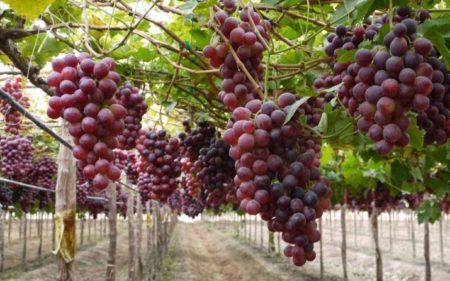
The crop ripens early. From flowering to harvesting takes about 100 days. The first clusters ripen at the end (middle) of July. Cleaning periods directly depend on the climatic zone. Rainy weather does not affect the quality of the crop, the berry is not prone to cracking.
A plentiful harvest is obtained due to a large percentage of fruitful shoots. The load is normalized, leaving no more than 6-8 kidneys on one shoot. Permissible load on the bush is 42 eyes. Bunches can hang on bushes until they reach removable maturity, that is, until mid-August.
The use of berries is wide. Of grape Zarya Nesveta makes delicious home-made wines of different strengths. Fruits are used as raw materials for billets (compote, jam), consumed fresh. Bunches retain their presentation during transportation, are in demand in the market.
Diseases and Pests
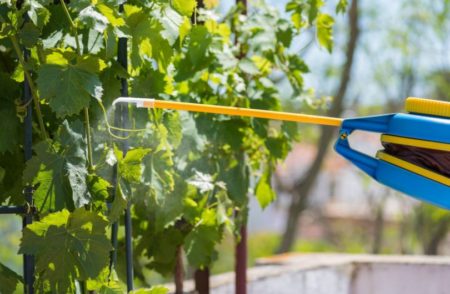
Assessment of disease resistance 2.5 points. This is an average for winegrowers. To maintain immunity, preventive measures are taken:
- three times a season they are treated with fungicides (before flowering, at the end of it, at the time when the berries become the size of a pea);
- the soil in the spring is treated with a solution of iron sulfate, 300 g are bred in a 10 liter bucket;
- use mulch to adjust the humidity level.
Harvest of the Dawn of Unaware is rarely affected by wasps, more often it suffers from birds and harmful insects. Grape growers have to protect the bushes from the codling moth, a felt tick. To save berries from birds, a tight net is pulled over the bushes.
From codling moth grape treated with insecticides. The last processing is carried out a month before the harvest. In the fight against felt mite, acaricides are used.
Leaving and landing
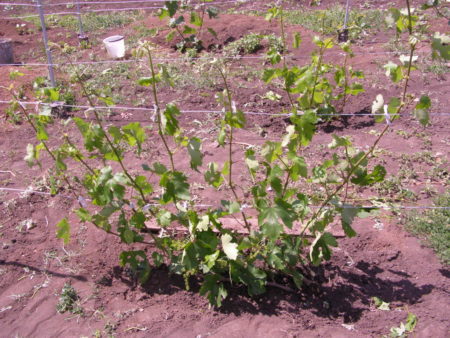
Care requirements are standard, as well as landing. For beginners, their implementation is not particularly difficult. Seedlings are planted in pits 80 x 80 cm in size, seasoned with fertile soil, which contains humus, sand, ash, and mineral fertilizers.
Starting from 3 years, the bushes are fed. They bring in organic matter (humus), mineral fertilizers: potash in the summer, phosphorus in the fall. To preserve moisture in the soil, trunks circles are mulched with old, pretty sawdust.
Young grapes (1-2 years old) are watered regularly, the bush, which has entered the fruiting season, is not often. They are completely stopped at the time of flowering and during the pouring of berries. Good ventilation of the bush contributes to the correct formation. For this form, average pruning is recommended (6-8 eyes).
Reviews
Irina, Krasnodar Territory
In our conditions, the form ripens in early August. Zarya Nesveta is a hybrid ideal for market cultivation. The pulp is dense, with a crunch, in the taste of nutmeg, a bunch of salable (large, beautiful), is not damaged during transportation. Crops are worthy; shoot maturation is high. I cultivate the plantation as standard, there were no diseases yet, I didn’t reveal any peas.
Vladimir, Kazakhstan
The bush is young, planted with cuttings last year in the spring. The vine over the past season has matured to a length of 2 meters, its thickness was slightly more than 0.5 mm. The seedling is medium in development. This spring began to form a cordon, left 3 clusters. I liked the form, there was no peeling. The berries ripened by August 15-20. Two clusters of 300 g each, one about 1000 g. The mass of berries from 10 to 12 g. The bush did not hurt, the growth was average, the taste is very satisfied, and the appearance of the berries did not disappoint: the color is purple with a purine hue, in the taste of notes of muscat.
Egor, Kamyshin
In a state of removable maturity, the berries are pale pink. If the clusters are left, not cut off immediately, they are gaining a more intense color. Yield of Dawn Unslightly is good, even if the load is high. This is me in refuting rumors that this form is not fruitful.




 Non-covering winter-hardy grape varieties for Moscow region
Non-covering winter-hardy grape varieties for Moscow region How to keep the vine in winter
How to keep the vine in winter When can I transfer grapes to another place in the fall
When can I transfer grapes to another place in the fall How to cover and prepare grapes for the winter in the suburbs
How to cover and prepare grapes for the winter in the suburbs